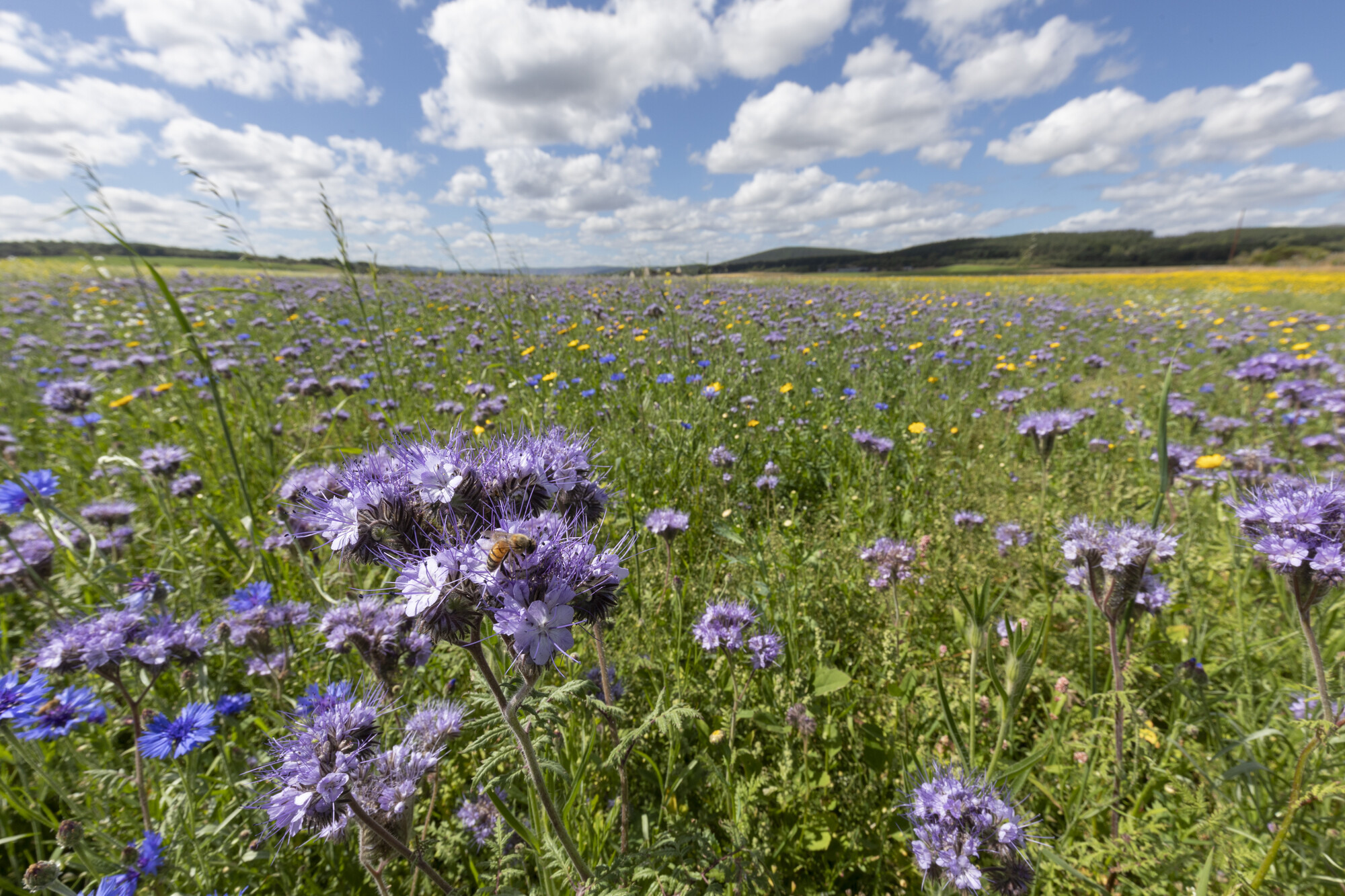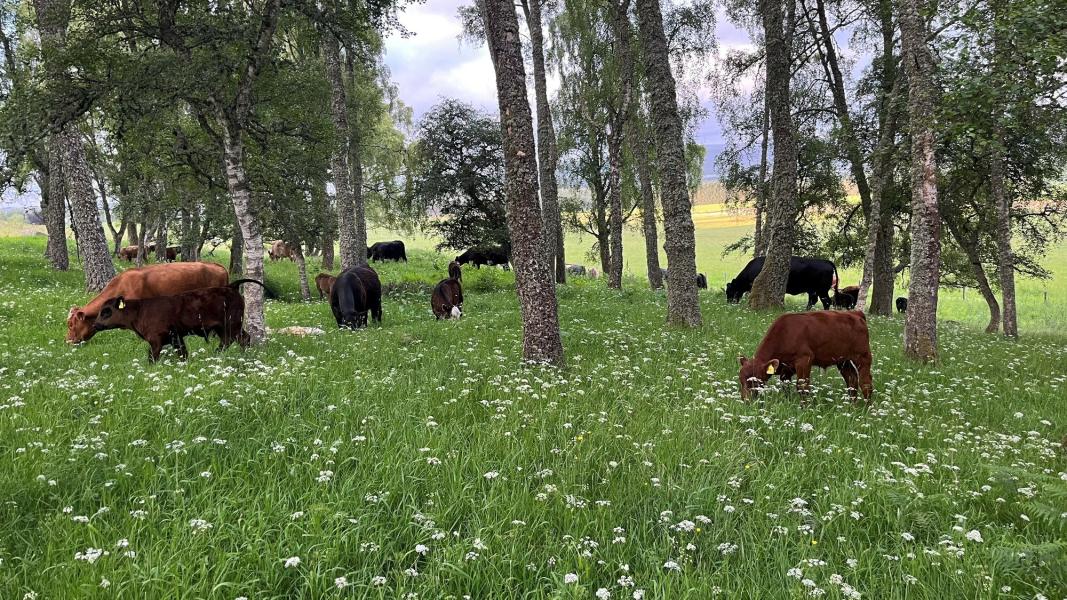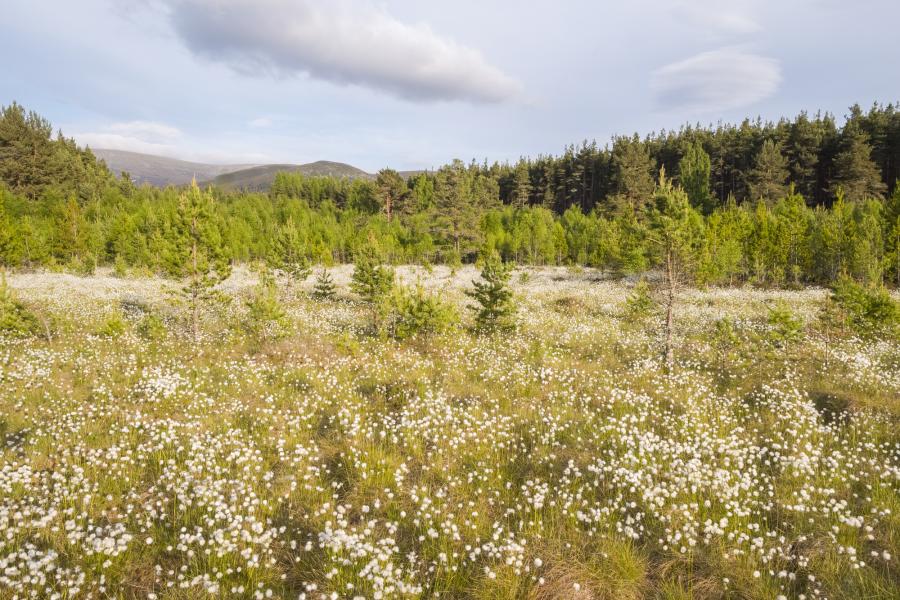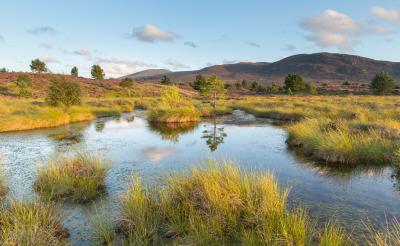Lowland grasslands

Home to four of the five biggest mountains in Scotland, the Cairngorms National Park is known for its dizzying heights, but a huge quantity of the land within the National Park boundary is made up of vitally important lowland grassland. From lush green grassy fields, to meadows blooming with wildflowers, right through to reedy ponds, the mixture of habitats that lowland grassland encompasses help to form important ecosystems for our internationally important wildlife.
In the National Park six to 15% of our surveyed permanent grasslands are classed as species rich, compared to 2% across the rest of Scotland, and these landscapes deliver a wide range of benefits for people.
This land is more managed than its wilder Cairngorms counterparts, with farmers and crofters having tended parts of the land for many centuries. These grasslands often have a unique make up of plants, animals, invertebrates and fungi depending on how they have been managed, which makes preserving them important. They continue to sustain grazing populations of sheep and cattle, and where once it produced hay, with changing climate and less predictable and wetter summers, it now plays an important role producing silage. This land also provides the shallow pools, wet mud and short vegetation that struggling species like lapwings and curlew rely on.
However compared to elsewhere in the UK, the grasslands of the National Park have often been subject to less intensive management, which makes these complex habitats even more important.
It is within these grasses that ground nesting birds find sanctuary to raise their young, tucked away out of sight, but very often it is their sound that alerts passers by to their presence. A sensory delight, at the right time of year the unmistakable call of the skylark or the iconic song of the yellow hammer provide healthy reminders that well managed grasslands are teeming with life.

It isn’t just a plethora of greens that signify grassland, but come summer a colourful collection of flora blooms, purple thyme and knapweeds, yellow rattle and primroses, and white eyebrights and oxeye daisies. Significantly the National Park is home to the alpine milk vetch, northern hawksbeard and brown bog rush, as well as the greater butterfly orchid and dark red helleborine. Attracting bugs and bees aplenty, invertebrates rely heavily on varied and consistently managed grasslands, including in the Cairngorms the small scabious mining bee, the excellently named dingy skipper, and northern brown argus. In turn bugs, bees, flies and midges help to sustain birds and bats.
Just as the invertebrates and birds rely on our grasslands, so do the people and communities within the National Park.
Featured
Wildlife
The Cairngorms National Park is home to a quarter of the UK’s rare and endangered species. Its rich habitats are a haven for an array of wildlife, from iconic birds to elusive plants and flowers.
Wildfire management
As the climate changes, the risk of wildfires is ever more present in our daily lives and in a National Park, a wildfire has the potential to be devastating.
What we do
From pioneering conservation projects to community engagement and active travel, find out more about the range of work happening across the National Park.











